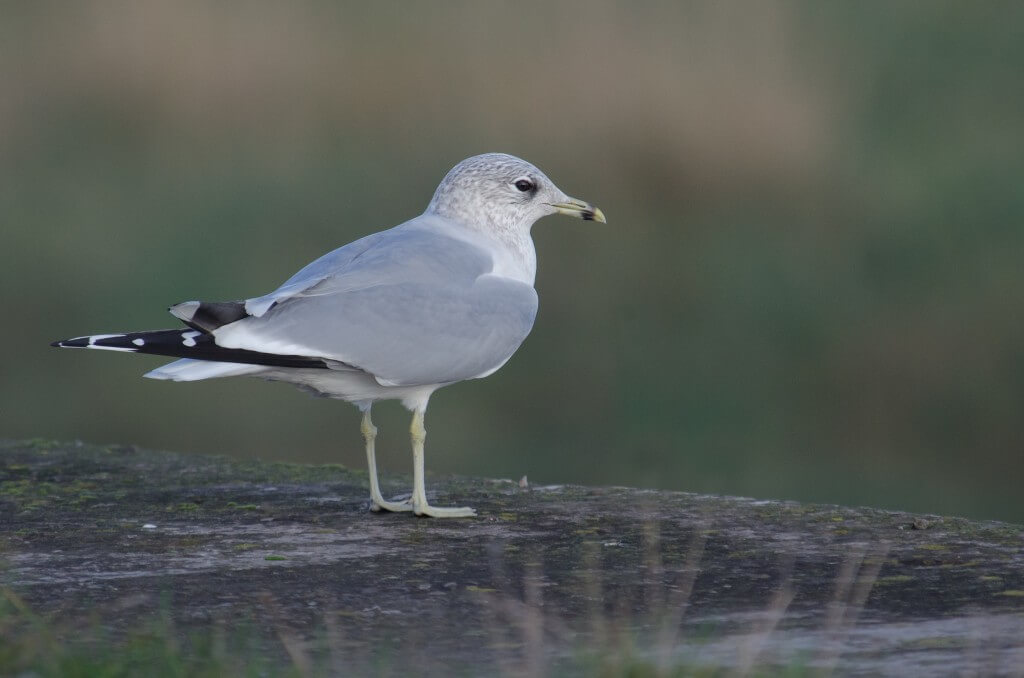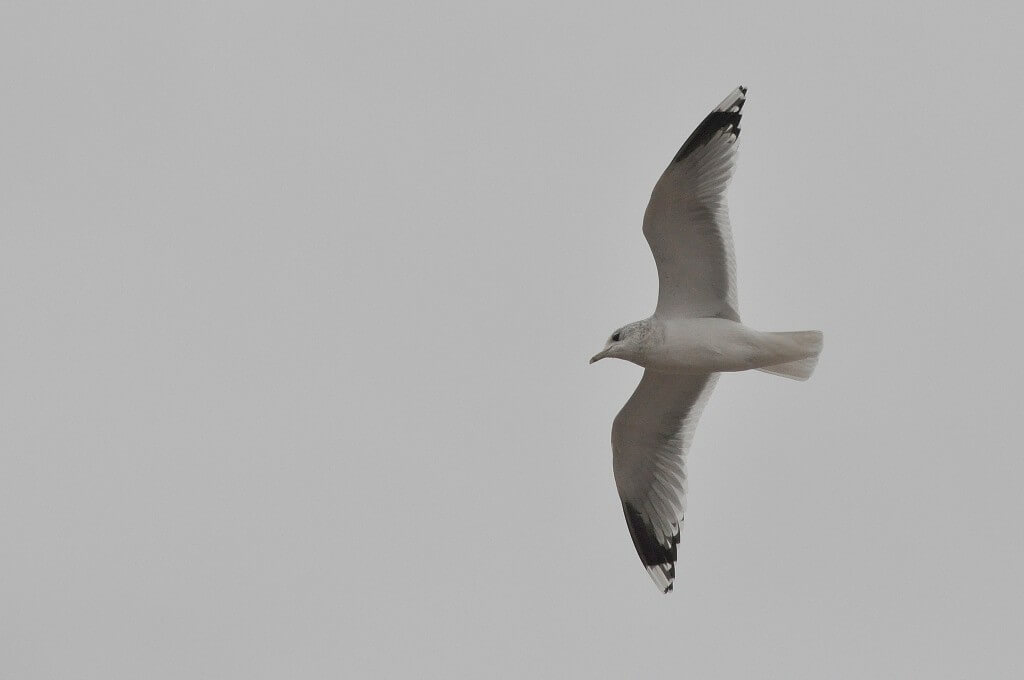
I like Common Gulls – otherwise known as Mew Gulls. When people ask me how to recognise them I say they are the gulls with friendly faces (there is no feature more diagnostic of a Herring Gull than its annoyed expression).
But Common is a misnomer most of the time – in these parts, Common Gull is the fourth commonest gull after Black-headed, Lesser Black-backed and Herring. It always strikes me when in Scotland, how much more commonplace the friendly-faced gull is, up there.
I had to choose a route home one day last week, from a chat with a local farmer, and the choice was ‘quick way’ or ‘prettier slow way’. No contest, the prettier slower way suits me best these days.
It was a sunny day and I travelled along a delightful back-road, they even exist here in east Northants, which is single-track through a field, across some cattle grids and often with a stop to open and then close a gate at the end of it. I was lucky that the gate was open but as I slowed at that point I saw a big flock of gulls in a nearby pasture. Some were in a second grass field, but about 600 gulls were in the field on my right. I could already see from the car that there were a lot of Common Gulls, pretending, together, to be common, and when I scanned the flock they were Common:Black-headed in a ratio of approximately 5:1. Another 100 or so Commons in the other field brought the total to c600 Common Gulls in this one, small, secluded, back water.
I don’t recall seeing that many in these parts before, and certainly not out here in the farmed countryside and away from the gravel pits and the Nene Valley.
Why, I wonder, were they all here? This was a sheep farm and there were some sheep out in the fields, but the birds were loafing rather than feeding when I saw them. I suppose it’s just possible that this was a migrating flock of Common Gulls stopping off on their journey north to the hills of England and Scotland for the breeding season.
‘Large flock of Common Gulls’ is hardly an earth-shattering observation, and it’s not that strange, but, as they often do, an observation of nature got me wondering and thinking.
But they all looked very friendly.

Thanks for that Mark. It’s good to be reminded that we are a nation of observers of ordinary things. It’s part of our identity:
Nov. 3. Sea-gulls, winter-mews, haunt the fallows. Beeltes flie.
But then a little more unusual:
Nov. 26. A man brought me a common sea-gull alive: three crows had got it down in a field, & were endeavouring to demolish it.
(Entries in Gilbert White’s Journals, 1777 and 1776 respectively.)
How many naturalists and scientists has that man inspired over the centuries?
Hi Mark,
it’s the beginning of passage time for Common Gulls ( many think the American Mew Gull a different species) which may account for your large number of them. Here in North Yorkshire they are often the carrier species for Mediterranean Gulls.
Add a bit of grim weather and you can get a splash of Kittiwakes mixed in too (a few have been dropping in between Bedfordshire and West Yorkshire today)
‘Hills of England’!! This is a very rare bird indeed. There used to be some in Northumberland near Rothbury breeding in an old gravel pit. Cumbria has 2 pairs thanks to me and even Dumfries and Galloway are struggling these days. No one seems to know why these gulls are such a rare breeder but I presume ‘Global warming’ will be one of the reasons put forward. Even Black headed Gulls are struggling in most colonies and it would be interesting to know if it is lack of food yet again. Remember the old colony at Ravenglass went from 16000 pairs to 0 in a very short time.
I’ve been looking at Common Gull records in neighbouring Leicestershire & Rutland, Mark. There is certainly a spike at this time of year, with birds passing through on spring migration. In 2012, 6000 birds in January at Rutland Water increased to an astonishing 32000 on 13th March.
Kevin – very interesting. Thanks c much for your comment.
Mark, the theory goes that the ‘Common’ name is nothing to do with perceived abundance. Rather it refers to the Commons (public land) because of the species’ association with grassy fields.
Jim – that makes some sense. Thanks.
There used to be quite a few around the Football fields near the airport.